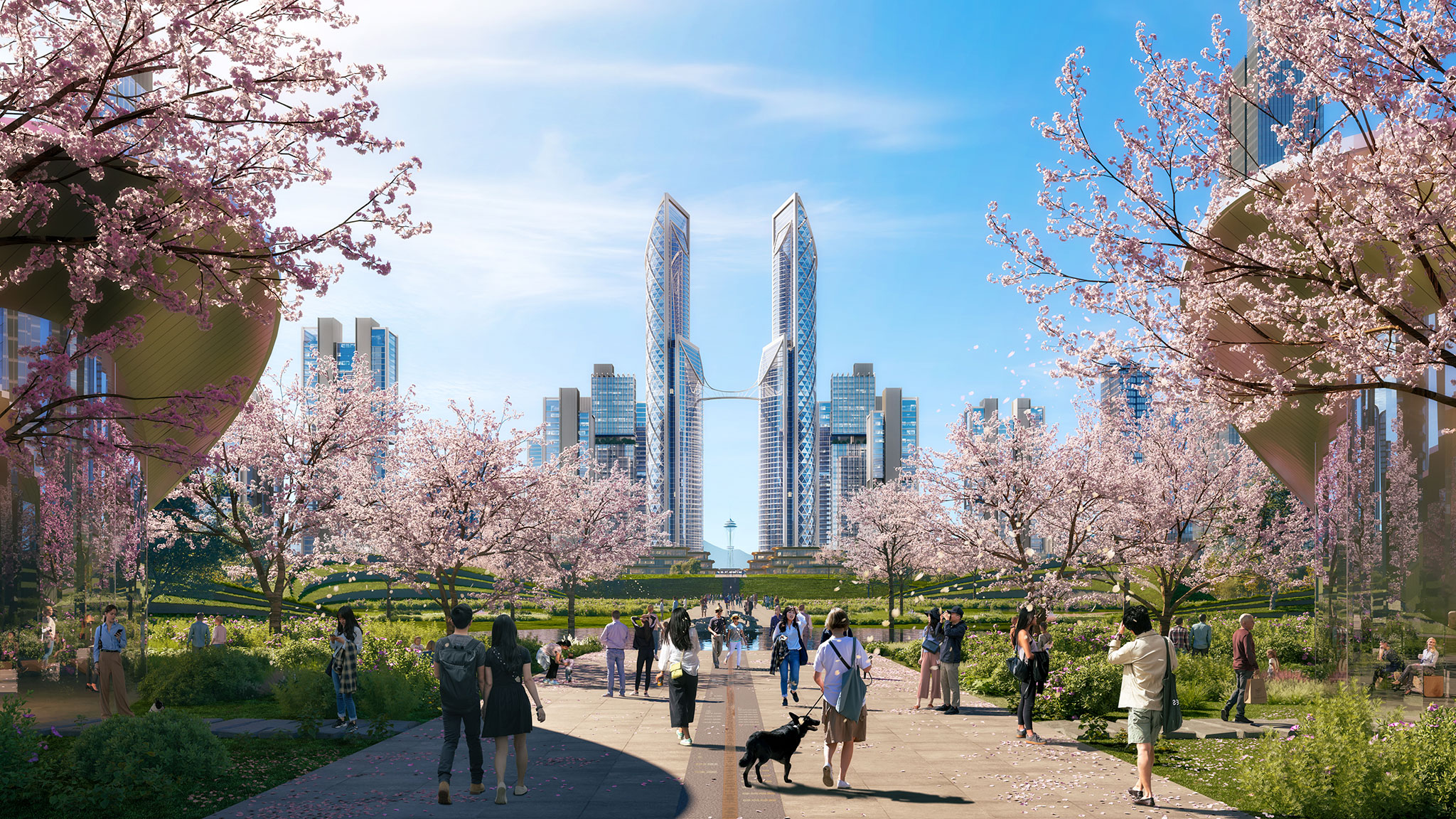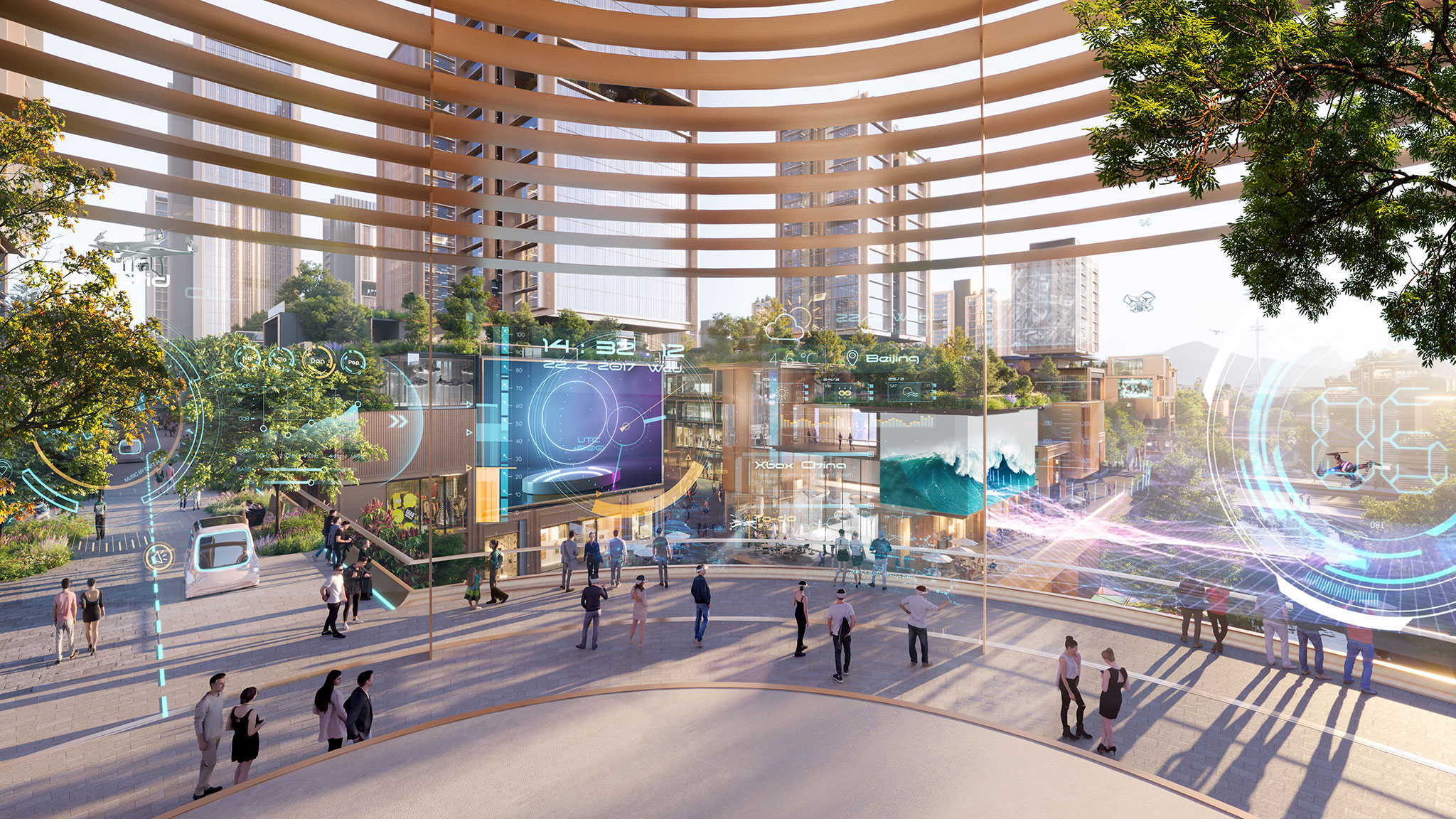The extensive landscaping along the central axis creates a leafy spine that guides people through the district to access various cultural monuments such as a public library, exhibition hall and galleries. In addition, a new public park is planned to the north and a new cultural center that sensitively connects with a wetland to the south.
Public transport responds to the needs of local users and is perfectly connected through a multi-level infrastructure with the broader buildings of the city.
Therefore, the project seeks to build a new typology of city where the central axis of the program is to build a sustainable city with low CO2 emissions, where the connections between nature and citizens are the main element of the project.

Display. Yuhang Masterplan by Foster + Partners.
Project description by Foster and Partners
Foster + Partners has won the international competition to design a new centre for Hangzhou, the capital of China’s Zhejiang province. The masterplan creates a green and interconnected mixed-use quarter, at the heart of the Yuhang District.
“We are delighted to have won the competition to design a new centre for Hangzhou, a beautiful city with nature at its heart. Our design stemmed from extensive public consultation - and is all about developing a sustainable new urban quarter, which establishes new connections with nature and makes it a part of people’s everyday lives.”
Gerard Evenden, Head of Studio, Foster + Partners.
“The masterplan is organised around a 2.5-kilometre central axis that runs the full length of the site, from north to south. The axis intersects with different bodies of water, generating five distinctive zones with unique characteristics. Each zone celebrates the city’s relationship with water in its various forms, from streams and lakes to canals and wetlands.”
Bruno Moser, Head of Urban Design, Foster + Partners.

Display. Yuhang Masterplan by Foster + Partners.
Extensive landscaping along the central axis creates a leafy spine that guides people through the district. Green space also bookends the site with a new public park to the north, and a new cultural hub that sensitively connects with a wetland to the south. Cultural landmarks - such as a public library, an exhibition hall and galleries - are located along the full length of the axis. This allows people across the district to access a rich programme of arts and culture.
Massing gradually steps up towards the central axis, to respect the site’s natural surroundings and create a busy urban centre with a dynamic skyline. Building density also increases around public transport hubs to encourage sustainable travel across the city.
Across the site, public transport responds to the needs of local users and connects seamlessly with the city’s wider infrastructure systems. The masterplan provides a multilevel infrastructure network and a diverse range of ‘last mile’ transport options, such as shared micromobility, autonomous pods, shuttles, and water transport.

Display. Yuhang Masterplan by Foster + Partners.
The low carbon masterplan conserves existing wetlands and incorporates sustainable strategies – such as passive massing and rainwater reuse– to make a positive contribution to Hangzhou. The project aims to achieve China’s 3-star green rating, as well as LEED and WELL Community Gold certification.
“Our masterplan creates a balanced 24-hour district, where people can live, work and play. We are providing a rich mix of public amenities - including offices, nurseries, sports facilities and a shopping centre - in close proximity to vibrant, human-scale neighbourhoods.”
Martin Castle, Senior Partner, Foster + Partners.





























